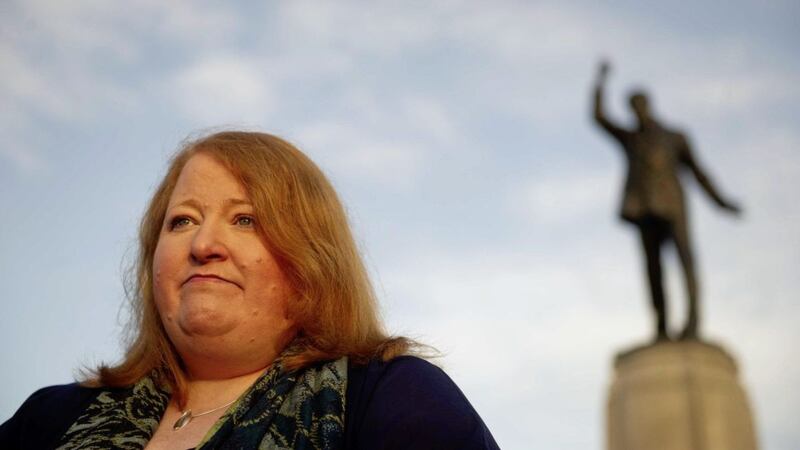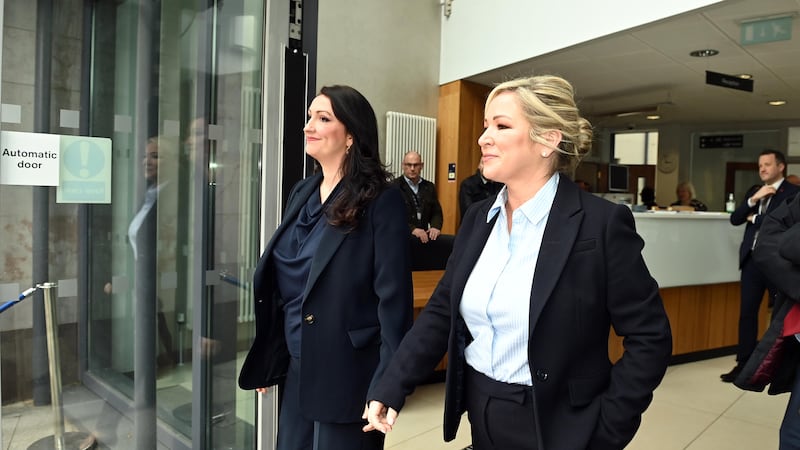"POLLS aren't elections and we take nothing for granted," Alliance leader Naomi Long said, after a LucidTalk poll this week showed her party at 18 per cent - just one percentage point behind the DUP.
"This was an internet poll and we have to keep that in mind," was the spikier response from DUP leader Arlene Foster.
It is unfortunate that Northern Ireland is too small to sustain competing pollsters and reach a 'poll of polls' consensus.
LucidTalk's only regular comparator, the annual Life and Times survey by Queen's and Ulster universities, uses different methodology - although it has also been largely conducted online this year due to Covid.
Expect fresh equating and equivocating when its results come out in June.
But strict accuracy is beside the point when considering how polls feed back into politics. Where a sustained trend such as the Alliance surge approaches a tipping point such as eclipsing the DUP, it is going to change perceptions and behaviours.
The most profound impact of this week's poll is to make Stormont's power-sharing arrangements - its 'ugly scaffolding' - appear hopelessly outdated.
If Long's party took second place, she would not become deputy first minister. That role would go to Foster, if she were still DUP leader, because unionism would still be the second largest designation.
In theory, this is perfectly valid: the posts of first and deputy first ministers are not reserved for unionists and nationalists; 'other' is also a designation.
If Alliance, Greens and People Before Profit won more seats than all unionists or all nationalists, Long could enter the executive office.
In reality, voters regard supporting 'others' as a rejection of designation itself.
It was challenging enough to power-sharing's assumptions for Alliance to surpass the UUP and SDLP, as happened in the last Westminster and European elections.
The mere possibility of Alliance coming second in an assembly election drains the system of legitimacy.
Alliance supporters will see their votes as being discounted to guarantee a perverse outcome. Many nationalists will also wonder why Foster must be foisted upon them.
Or the shoe could be on the other foot: Alliance is closer to eclipsing Sinn Féin by seats than the DUP by votes, and seats are what count in appointing an executive.
For the moment, Alliance has little prospect of coming second by seats at the next assembly election.
This week's poll showed the DUP's entire four percentage point loss being picked up the TUV, a one-man band that will struggle to translate growth into gains. The DUP could even benefit from TUV transfers.
However, there is a credible prospect of Alliance denying the main two parties a combined majority of seats.
Sinn Féin and the DUP have 55 assembly members between them. Various interpretations of the LucidTalk result show this falling to around the 45 member mid-point in the 90-seat assembly.
Both parties already have a combined vote share below 50 per cent in opinion polls over the past three years and in two of the last three elections.
Imagine a scenario where Alliance, the SDLP and UUP go into opposition, leaving Sinn Féin and the DUP to run a minority administration, unable to get anything through the assembly on their own and having to use petitions of concern to stop everything else.
Or imagine the big two with a bare majority of seats, won with minority electoral support, exposing them to a lack of authority and the slightest backbench revolt.
None of these scenarios have to occur to highlight Stormont's creaking structure: voters will now imagine them, or be promised or warned of them, before every election.
Transforming the resulting pressure into change is not straightforward.
Most of the ugly scaffolding can only be removed by Westminster, which will not touch it without Sinn Féin and DUP acquiescence.
The key to that could be putting both parties on the spot about plausible new election outcomes.
Would the DUP accept second place in the executive, let alone third? It has always brushed off the question of being Sinn Féin's 'deputy'.
Would Sinn Féin join a minority executive or any executive facing a strong opposition? It walked out of Stormont in 2017 in part because it disliked having an opposition, then insisted on no opposition when devolution was restored last year.
The likelihood is that both parties would refuse to commit to scenarios where they are not always in charge, further alienating themselves from the electorate.
At that point, the argument for reform would become overwhelming.









